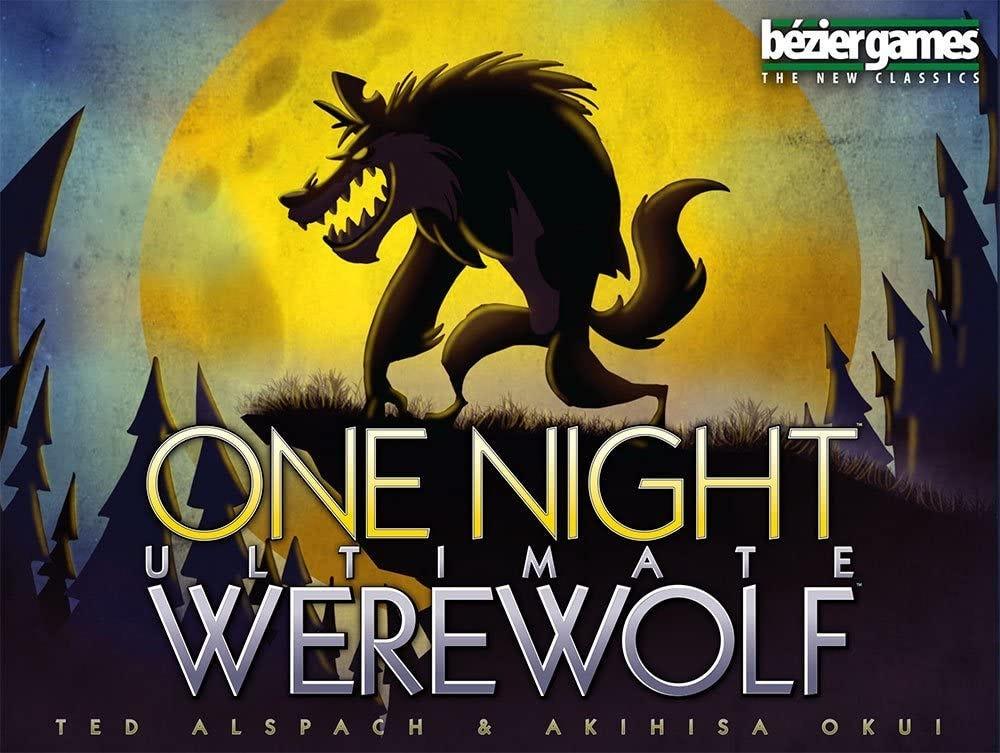For my first critical play, I enjoyed the game: One-Night Werewolf with a few friends. Created by Bezier Games, it was initially introduced as a physical tabletop card game. From there, mobile and desktop versions of the game have been made available. For the critical play, my friends and I played the game through the website provided. Although able to be played by virtually anyone, I believe the target audience for One-Night is kids to teens. This is mainly inferred from a more fantasy-inspired twist on the classic Mafia set up and the cartoonish card art that would attract a younger audience.
One-Night’s unique take on the genre of social deduction and mafia-like games is how information is presented. This is mainly done in two main ways: the lack of “killing” and the surplus of roles/cards set in the middle. True to its name, the game ends after one night, where the presentation of information isn’t on who died in between rounds, but more on who knows the roles of every player, and the extra roles not taken by anyone. Here the werewolves’ (the mafia adjacent in this game) objective isn’t to kill, but to survive unnoticed until the end of the game.

As a result, the collection and dispersion of information leans more into the unique powers of the variety of roles. The game has significantly more playable roles than the traditional setup, often involving powers of swapping cards or checking the cards of other players / or untaken cards. In the variation that I played, alongside the werewolf and the villager, we included the seer who has the choice to look at another player’s card or two cards from the center, the robber, who can check another player’s card and choose to switch, and the troublemaker who chooses two players to have their cards swapped.
With this set up of powers, there’s a lot of information available and often games come down to who claims which roles. The deduction of each game came down to verifying each player’s identity and ensuring that the information they provide lines up with everyone else’s. As a result, as each person reveals who they are and what they know, there is an overarching story of who is who. The werewolf itself also had the power to look into a card in the center, letting them know what role isn’t in the current game. The introduction of characters like the troublemaker also means that while a werewolf could be verified, once cards are swapped, that person isn’t exactly who should be voted out by the group, but instead who they were swapped with. Characters like this created more complexity and obstacles as this information is entirely up to the discretion of the player to reveal. This added complexity would generally be dizzying, but since the game ends after one round (whether the werewolf is caught or not), making the burden of tracking information bearable. However, I noticed that the game often came down to “my word versus yours”, and depending on who you play with, the game can end easily without much drama or fun as people easily resign to the popular vote, even if they are the good guy.

Ultimately, I believe this surplus of information and purposeful misdirection makes the game more layered than it initially seems. If everyone is able to get on the same page and go with a coherent story, they have a higher chance of catching the werewolf. Each game has a web of complexities waiting to be uncovered.
With these interesting mechanics that differ One-Night to numerous other games in the genre, it’s no surprise that it has become of the most popular and successful of its kind. From a player standpoint, it creates very fast-paced and intriguing dynamics from game to game. Aesthetically, it likens itself most closely to Fellowship, Fantasy, and Narrative, with Fellowship being the game’s main appeal. With so many weaving complexities and layers, it highlights the significance of social cooperation more so than most other games. It’s easy to get lost in the web of who is who and who knows what and who to trust. The fact that the game ends after a single round also places pressure on every player to reveal themselves and what they know. This huge web also naturally builds itself into a narrative as everyone works to keep track of all the identities and the order of events in which they happened (who swapped with whom, who knows what before cards were swapped, etc). Lastly, it offers a smidge more uniqueness with its fantasy inspired roles such as werewolves, masons, minions, etc.




